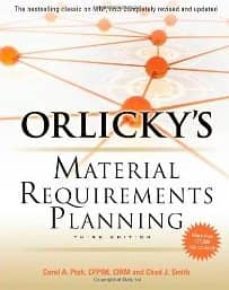Imprescindibles
Más vendidos Libros más leídos eBooks más leídos Todos los libros Todos los libros Autores destacados Series y sagas
Recomendados Libros recomendados Autores destacados Libros que inspiran Vidas con historia LGTBIQ+ English books
Ficción
Literatura Contemporánea Estudios literarios Clásicos Cuentos Poesía Teatro Libros de bolsillo Sagas literarias
Géneros literarios Novela romántica y erótica Novela negra Novela histórica Narrativa fantástica Novela de ciencia ficción Novela de terror Narrativa de humor Narrativa de viajes
No Ficción
Ciencias y tecnología Biología Ciencias Ciencias naturales Divulgación científica Informática Ingeniería Matemáticas Medicina Salud y dietas Formación Idiomas Estilo de vida Libros de Cocina Guías de viaje Narrativa de viajes Deportes Libros de Juegos Manualidades
Humanidades Autoayuda y espiritualidad Ciencias humanas Derecho Economía y Empresa Psicología y Pedagogía Filosofía Sociología Filología Biblioteconomía Estudios filológicos Estudios lingüísticos Estudios literarios Historia y crítica de la Literatura
Infantil
Juvenil
#Jóvenes lectores Narrativa juvenil Clásicos adaptados Libros Wattpad Libros Booktok Libros de influencers Libros de Youtubers Libros Spicy Juveniles Libros LGTBIQ+ Temas sociales Libros ciencia ficción Libros de acción y aventura Cómic y Manga Juvenil Cómic Juvenil Manga Shonen Manga Shojo Autores destacados Jennifer L. Armentrout Eloy Moreno Nerea Llanes Hannah Nicole Maehrer
Libros de fantasía Cozy Fantasy Dark academia Hadas y Fae Romantasy Royal Fantasy Urban Fantasy Vampiros y hombres lobo Otros Misterio y terror Cozy mistery Policiaca Spooky Terror Thriller y suspense Otros
Libros románticos y de amor Dark Romance Clean Romance Cowboy Romance Mafia y amor Romance dramatico Romance dramatico Romcom Sport Romance Otros Clichés Enemies to Lovers Friends to Lovers Hermanastros Slow Burn Fake Dating Triángulo amoroso
Cómic y Manga
Novela gráfica Novela gráfica americana Novela gráfica europea Novela gráfica de otros países Personajes, series y sagas Series y sagas Star Wars Superhéroes Cómics DC Cómics Marvel Cómics otros superhéroes Cómics Valiant
eBooks
Literatura Contemporánea Narrativa fantástica Novela de ciencia ficción Novela de terror Novela histórica Novela negra Novela romántica y erótica Juvenil Más de 13 años Más de 15 años Infantil eBooks infantiles
Humanidades Autoayuda y espiritualidad Ciencias humanas Economía y Empresa Psicología y Pedagogía Filosofía Historia Historia de España Historia Universal Arte Cine Música Historia del arte
Ciencia y tecnología Ciencias naturales Divulgación científica Medicina Salud y dietas Filología Estudios lingüísticos Estudios literarios Historia y crítica de la Literatura Estilo de vida Cocina Guías de viaje Ocio y deportes
CAROL A. PTAK
Recibe novedades de CAROL A. PTAK directamente en tu email
Filtros
Del 1 al 2 de 2
MCGRAW-HILL 9780071755634
Building on the pioneering work of Joseph Orlicky, this new edition of the classic text on material requirements planning (MRP) reveals the next evolutionary step for materials and supply chain synchronization in the modern manufacturing landscape. Orlicky''s Material Requirements Planning, Third Edition reviews the poor business results embedded in many of today''s manufacturing systems, discusses the core problems causing these results, explains an alternative pull structure for planning and controlling materials flow, and presents results from actual implementations. This thoroughly updated edition offers comprehensive coverage of MRP, describes the current state of the MRP application, and identifies the fundamental changes required to achieve sustainable success given the current global circumstances and technology options. This state-of-the art guide articulates the next generation of MRP logic--demand driven MRP (DDMRP)--and provides a roadmap for the near and distant future for this critical manufacturing management tool. Carol Ptak is currently a partner with the Demand Driven Institute, and was most recently at Pacific Lutheran University as Visiting Professor and Distinguished Executive in Residence. Previously, she was vice president and global industry executive for manufacturing and distribution industries at PeopleSoft where she developed the concept of demand driven manufacturing (DDM). Ms. Ptak spent four years at IBM Corporation culminating in the position of global SMB segment executive.
Ver más
Otros
Ediciones Díaz de Santos, S.A. 9788479784874
Después de leer los periódicos y seguir las pronunciadas oscilaciones del mercado de valores, se hace aparente que las compañías de alta tecnología se cuecen aparte. Nunca antes habían sido tan reales las oportunidades de hacer fortuna ni tampoco nunca antes habian sido tan fragiles las grandes empresas. Que es lo que realmente sucede dentro de estas compañias de alta tecnologia? Que clase de presiones y desafios tienen que encarar? Y, Como salen adelante?. Los proveedores de software para ordenadores, especialmente los que se especializan en solucionar las necesidades de procesamiento de datos de las organizaciones, son ejemplos cardinales de estas volatiles empresas. En los noventa fuimos testigos de su crecimiento desde pequeñas empresas hasta gigantes de miles de millones de dolares. No es de extrañar que atrajeran a los inversionistas. En 1998 a esas compañias les fue facil reunir tanto dinero como desearon. Por ahora, los fondos de inversion se han secado. Por que? Y, lo que es mas importante: Existira algun modo de revertir esta tendencia?. Este libro contiene la respuesta.
Ver más
Otros
Del 1 al 2 de 2




























